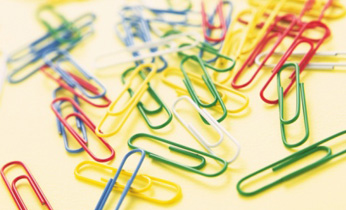
Magnetic paper clip experiment Science experiments are fun to do and great for children to learn. This magnetic paper clip experiment is simple to do and will teach your kids about magnetic forces. What You Need: Magnet Paper clips Activity: Hang one paperclip from the magnet. Use the hanging clip to pick up other paper clips. See how many paper clips you can pick up using only one magnet. You can also try this with different sizes of paper clips or paper clips that have plastic...

Ice play Inspire your child’s imagination with ice play, a great science experiment kids activity that may just spark a lifetime of scientific curiosity. Kids love to explore the unknown so dive into this fun science project today. Number of players: 1+ What you need: balloons water freezer Activity: Different shaped balloons work best with this activity. Select balloons of different shapes, fill them with water and place them in the freezer overnight. When they are frozen, cut away the balloons and place them on the first step of the pool. Allow your child to play with the shape and watch the shape change as the warmer water starts to melt it. You can spice this up with a bit of food colouring in an eye dropper if you are not in the pool Let them squeeze drops onto the shape and watch the colour of their ice shape...

Make coloured flowers Children love to learn and experiment with new things. Science experiments are fun to do and are a great way for children to learn about the world around them. Try this coloured flower experiment with your kids. What You Need: water scissors food colouring plastic cup flower, white carnation or celery stalk with leaves Activity: Fill up a plastic cup with water. Add a few drops of food colouring to the water. Cut the end off the flower stem or celery stalk. Put the flower stem or celery stalk in the water. Over the next six to 12 hours, the food colouring will be drawn up the stem along tiny tubes which are called vessels and the petals of the flower will start to change in...

Magnetic paper clip experiment
1
Ice play
2
Make coloured flowers
3Posted by | Comments Off on Chain Tag
Chain Tag
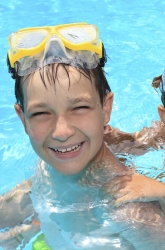
Chain Tag Check out this fun pool game that will keep the kids occupied on those hot days at the pool. Not only does it encourage group communication, it’ll also encourage teamwork and help them develop important communication skills. This unique group game is sure to be a hit and will get everyone laughing this summer. What You Need: 2 floating pool ropes As many friends as you can get Pool What You Do: Have your child and her friends section off a portion of the middle of the pool using the floating pool ropes (alternatively, they could improvise markers on the ground outside the pool). Then, have your child and her friends decide who will be “it.” The child that is “it” must tread water in the center of the sectioned off portion of the pool. Next, have the remaining children line themselves around the perimeter of the sectioned off portion of the pool. When you call go, the child that is “it” must swim around, trying to tag as many people as possible. Every person that the child who’s “it” tags must link arms with him or her and form a chain. The “it” chain must then work together to tag other players. The last person to be tagged is the winner of the game. For the next round, the child that was first tagged to become part of the “it” chain must start off as the player who’s “it.” Have fun playing chain...
Read MorePosted by | Comments Off on Play Pattern Hopscotch!
Play Pattern Hopscotch!
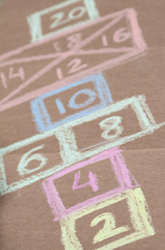
Play Pattern Hopscotch! Creating number patterns with pencil and paper can be dull. But creating patterns with hopscotch? Way cool! Get your child’s game on, and give her some math practice in the process. While developing pattern skills, students build a firm foundation for algebraic thinking. Here’s a fun at-home activity that will have your child recognizing, describing, and extending patterns using hopscotch squares. What You Need: Chalk Sidewalk or driveway Stone What You Do: Using chalk, draw a series of six connecting hopscotch boxes on the sidewalk or on a driveway. In the first four boxes, write a series of four numbers showing a pattern of counting by 2s. (For example, 2,4,6,8). Write one number in each box. Have your child extend the pattern by filling in the empty boxes with numbers that extend this sequence. To demonstrate the pattern, ask your child to hop on each of the boxes in the series, saying each number aloud. This time, ask your child to draw two more sets of six to eight boxes. Fill in each set of boxes with a series of four numbers that show a pattern, such as counting by 5s, counting by 10s, decreasing by 1s, or decreasing by 2s. Do you have a math whiz? You can also experiment with counting by 3, 4, or 6…this lays the foundation for multiplication. Although the boxes may look non-traditional, the game of hopscotch is still timelessly fun. Make your boxes…and then hop on. In teacher terms, you’re doing “kinesthetic” learning—using the body to integrate key intellectual skills and knowledge. In kid terms, you’ll be having tons of...
Read MorePosted by | Comments Off on Sponge Relay
Sponge Relay
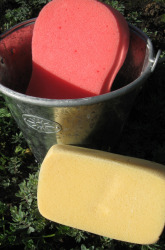
Sponge Relay Looking for a way to cool off on a hot day?...
Posted by | Comments Off on Homonym Beanbag Toss
Homonym Beanbag Toss
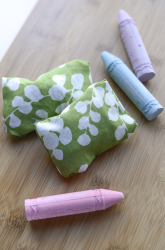
Homonym Beanbag Toss As second graders get quicker and more accurate with the...
Posted by | Comments Off on Pop the Balloons!
Pop the Balloons!

Pop the Balloons! Popping a balloon is burst of fun with this balloon...
Posted by | Comments Off on Play Drop Catch
Play Drop Catch
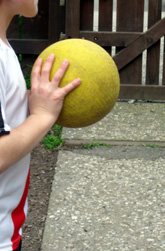
Play Drop Catch Develop your child’s hand-eye coordination in an engaging way by...
Posted by | Comments Off on Olympic Games for Kids
Olympic Games for Kids
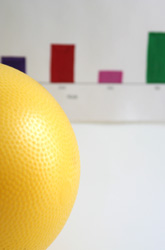
Olympic Games for Kids In first grade, students are developing their graphing skills....
Posted by | Comments Off on Play Four Square!
Play Four Square!
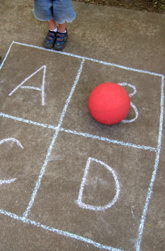
Play Four Square! What kid doesn’t enjoy bouncing a ball around? Similar to...
